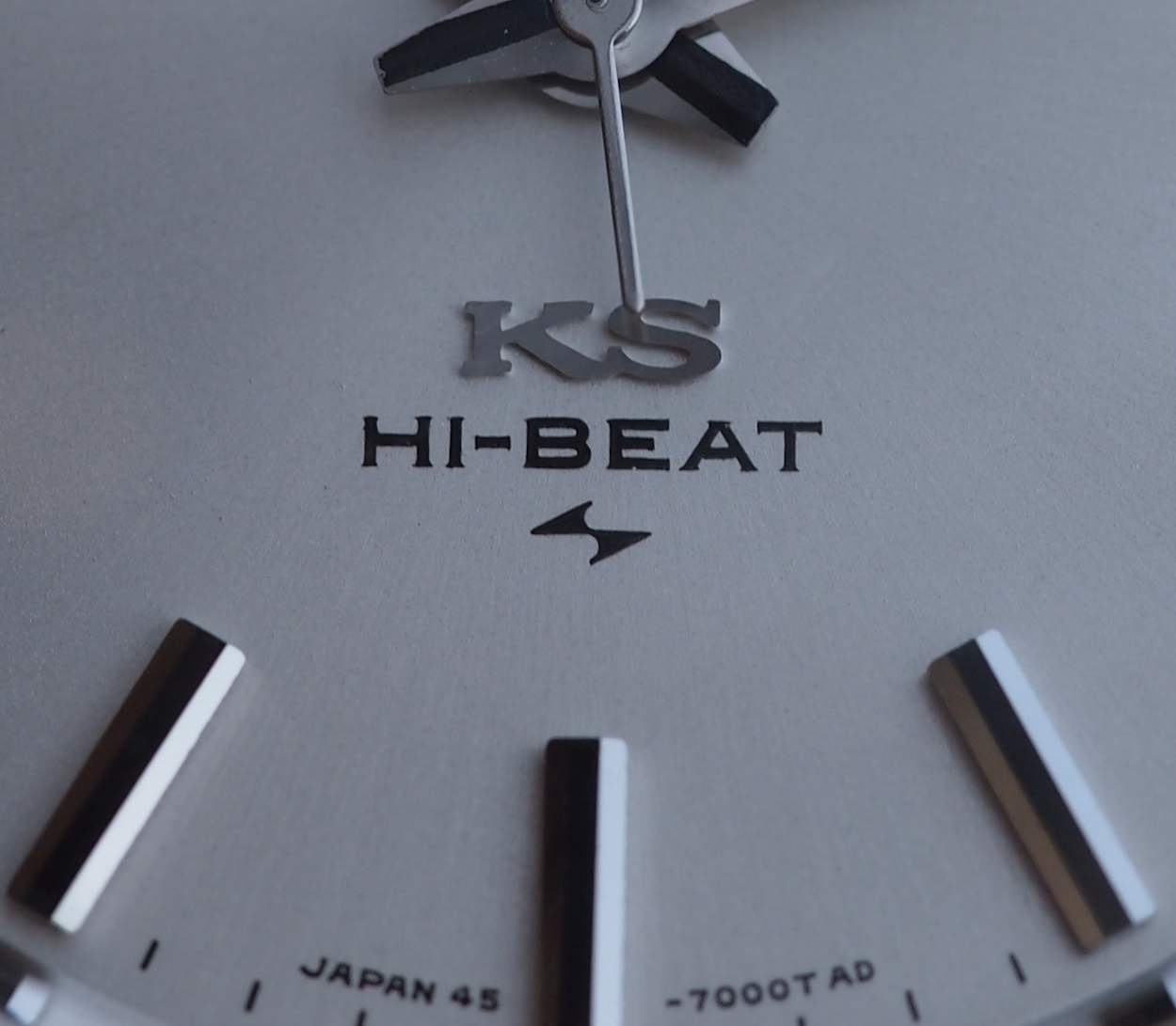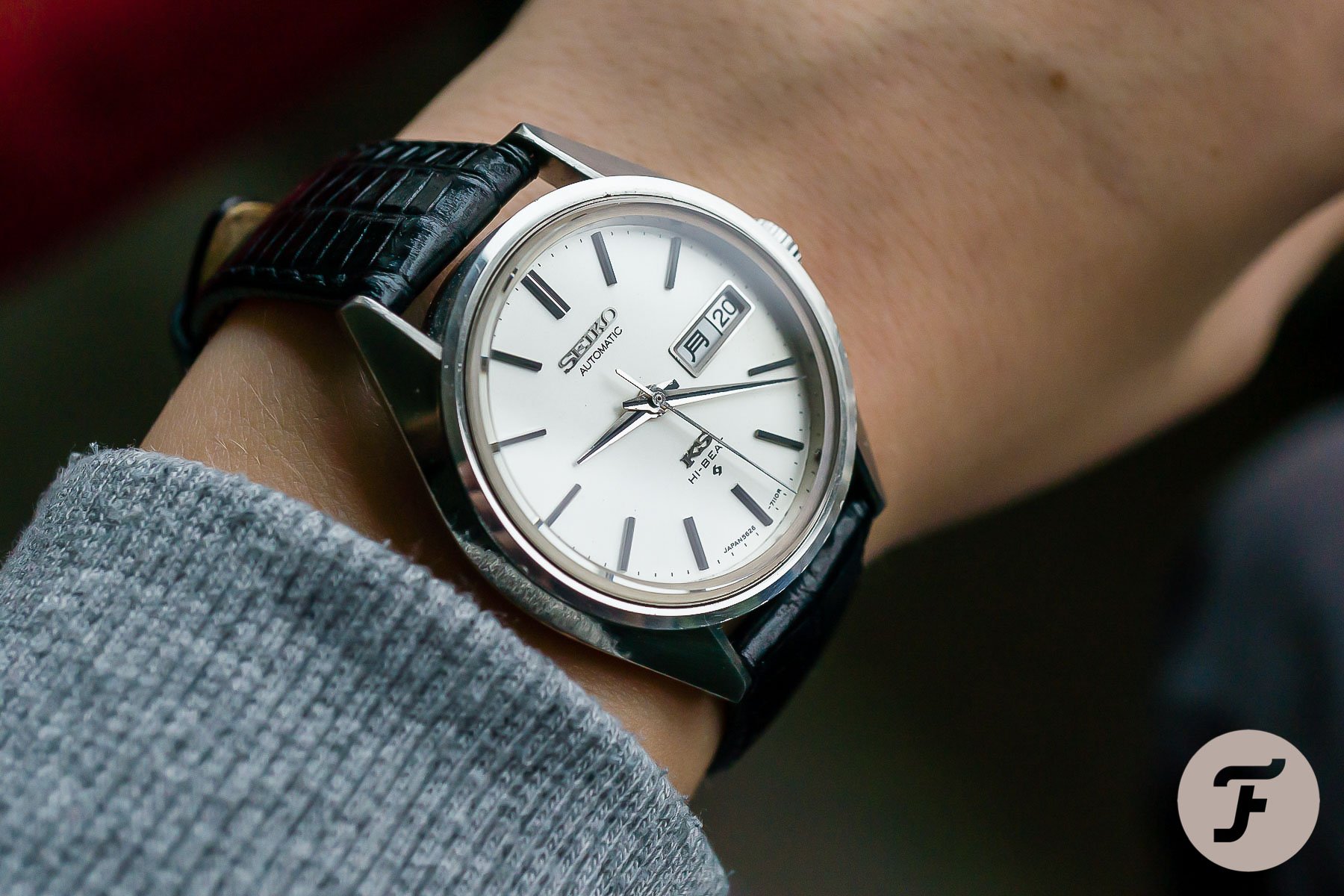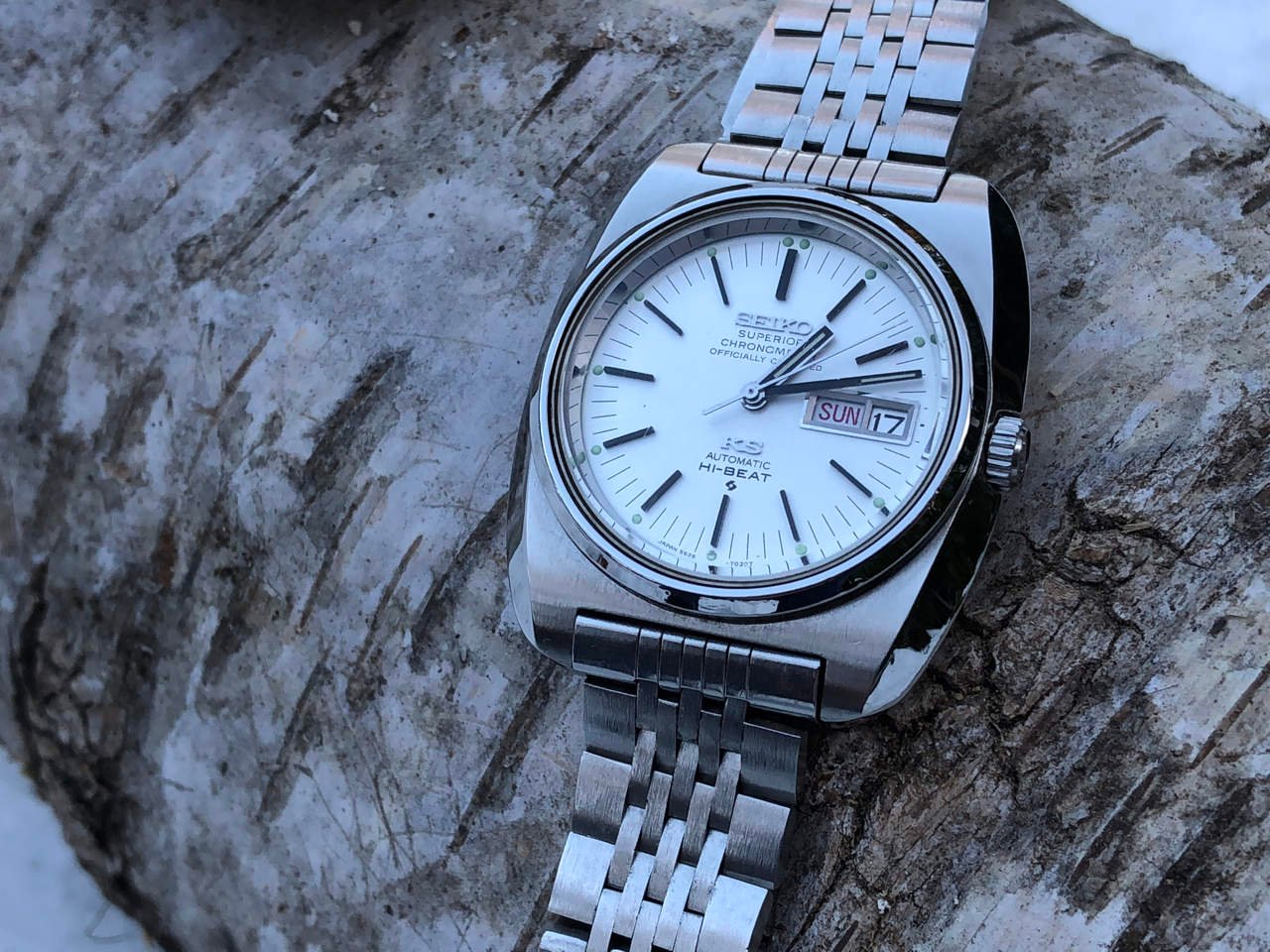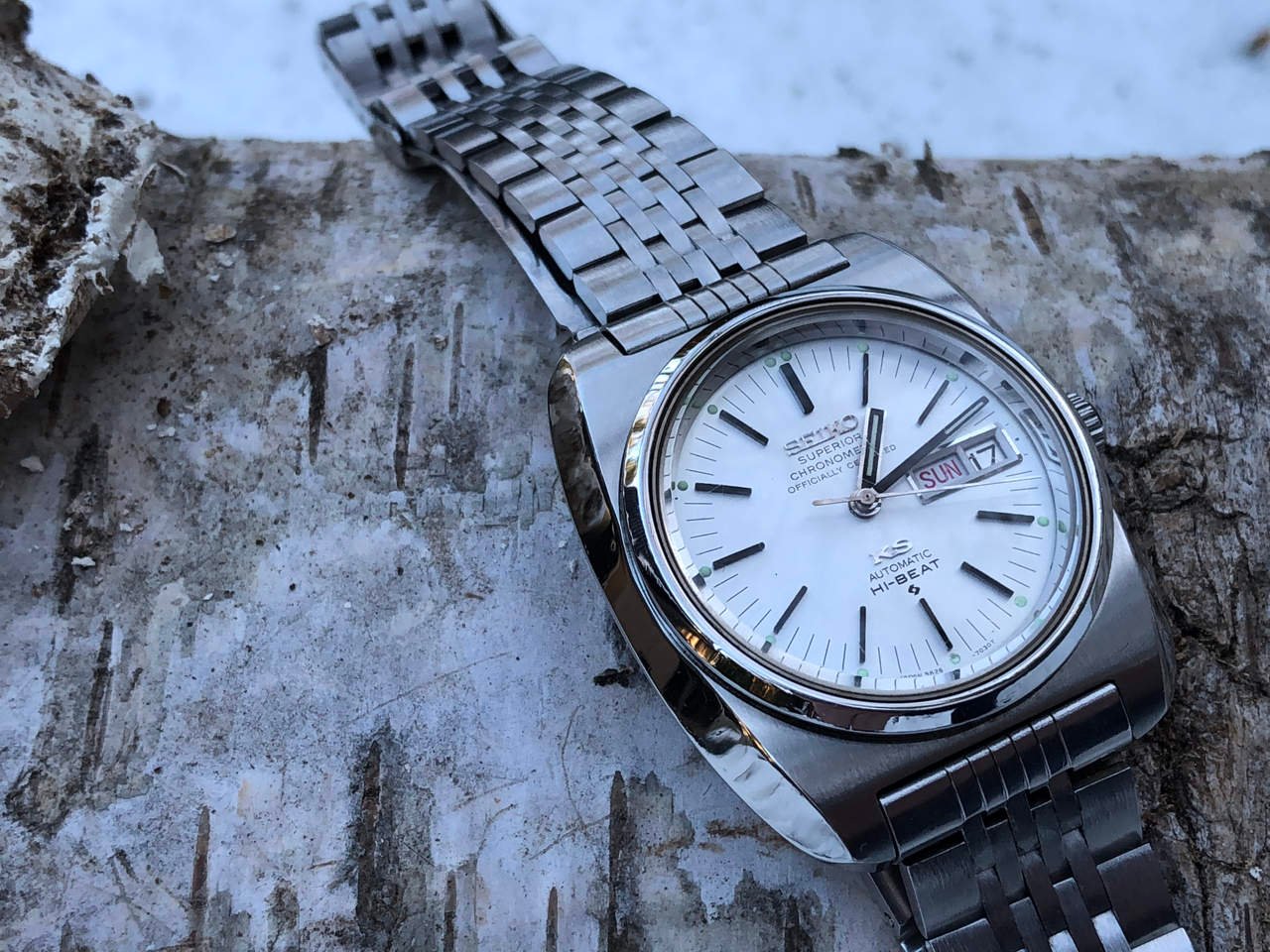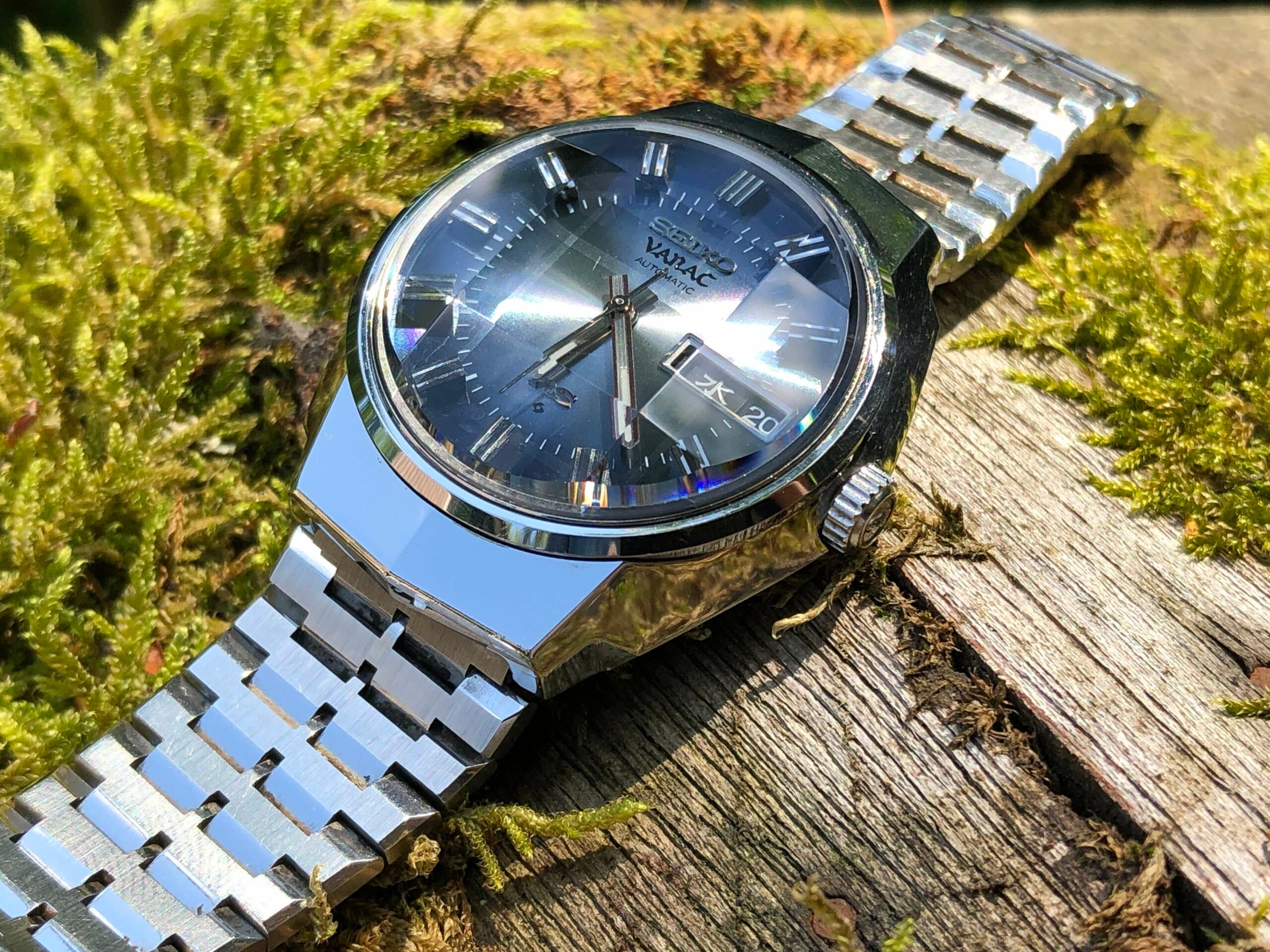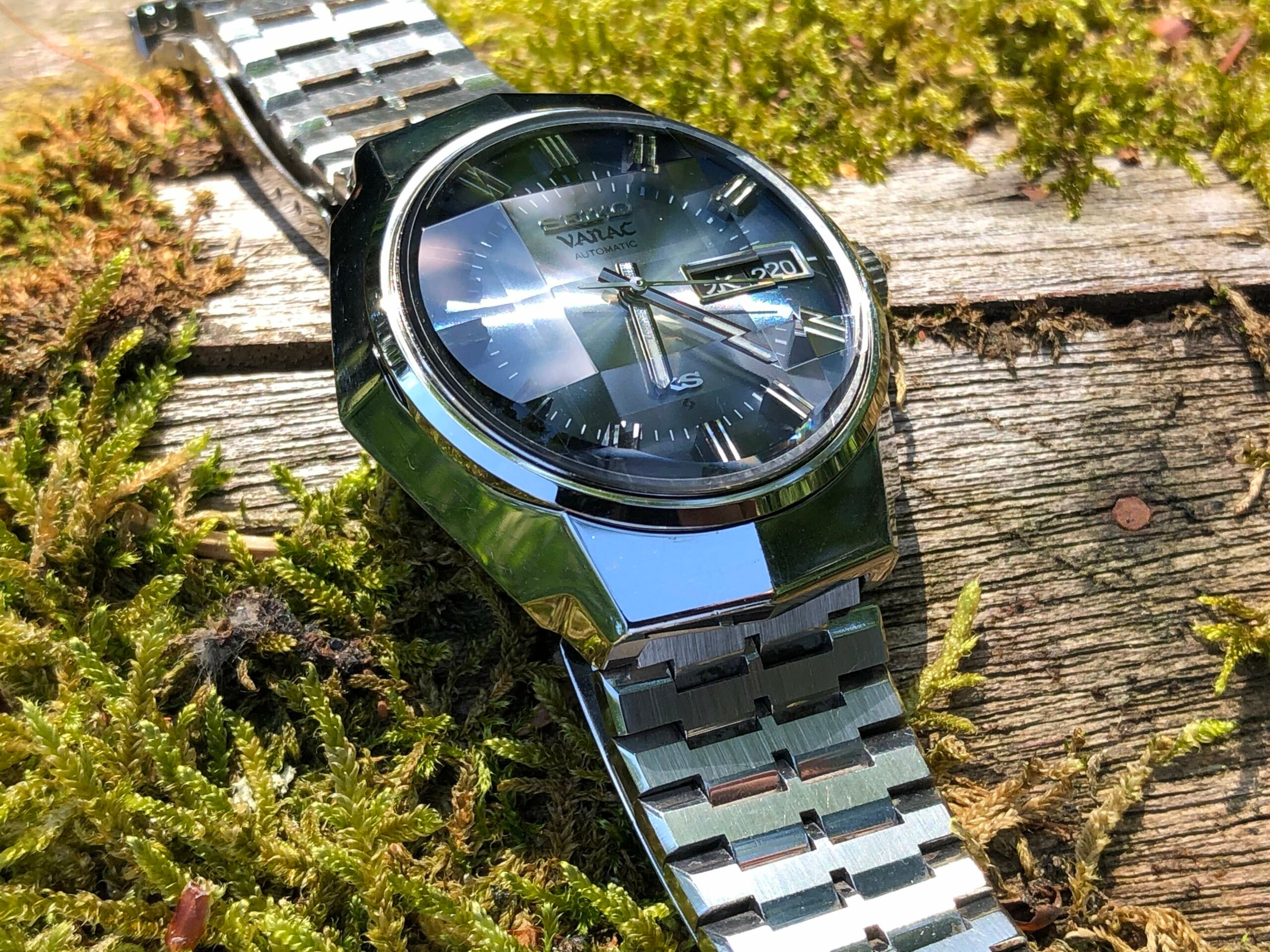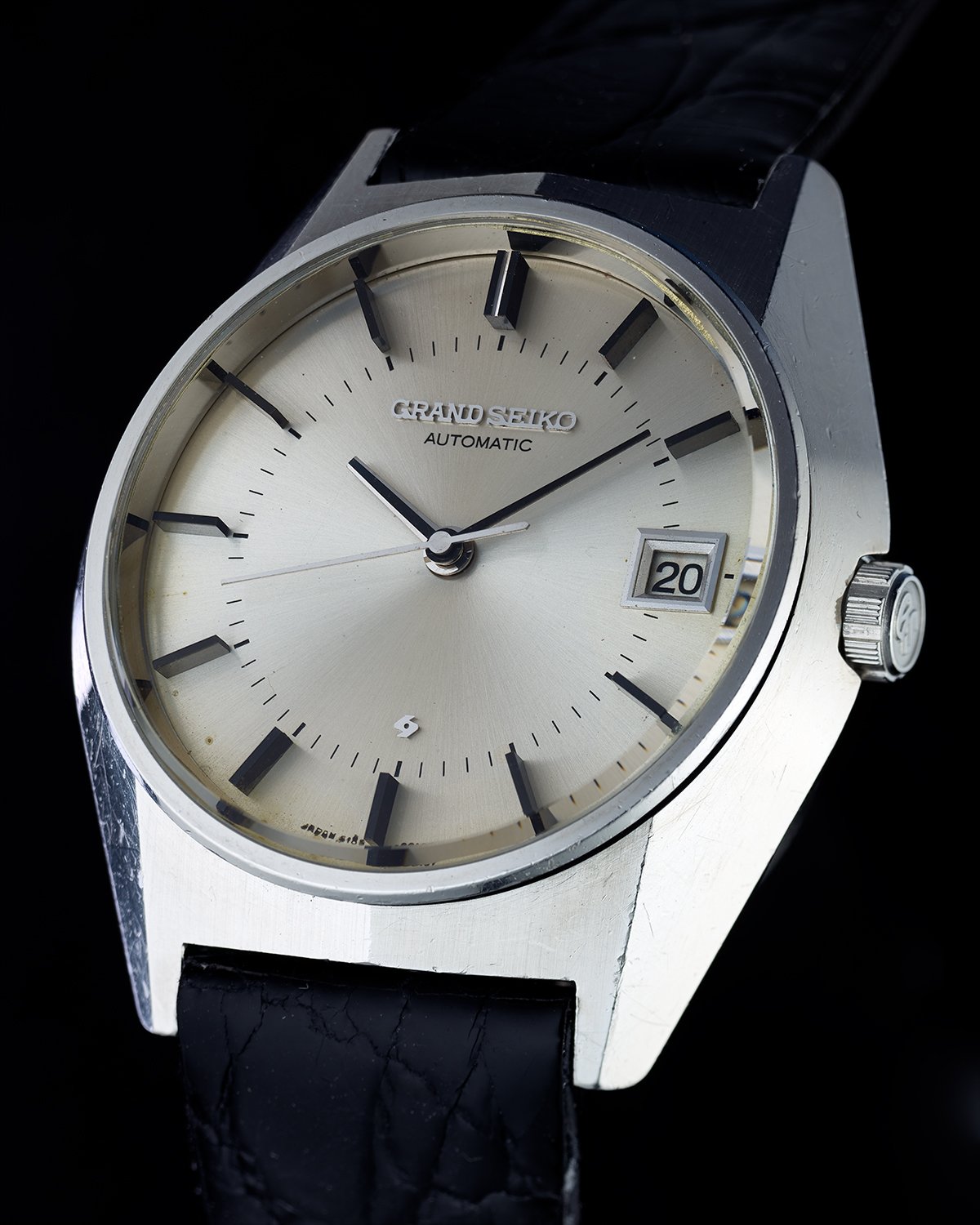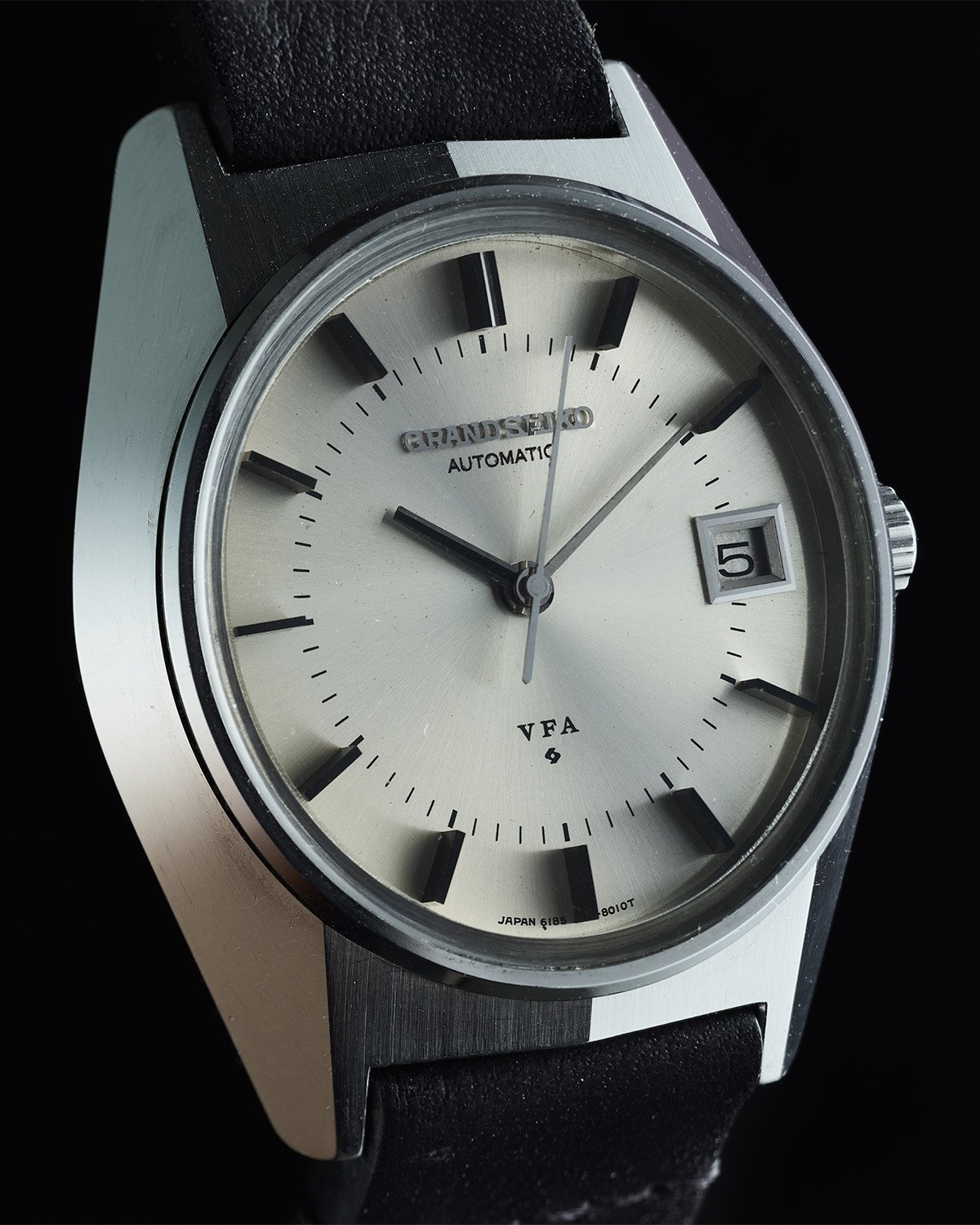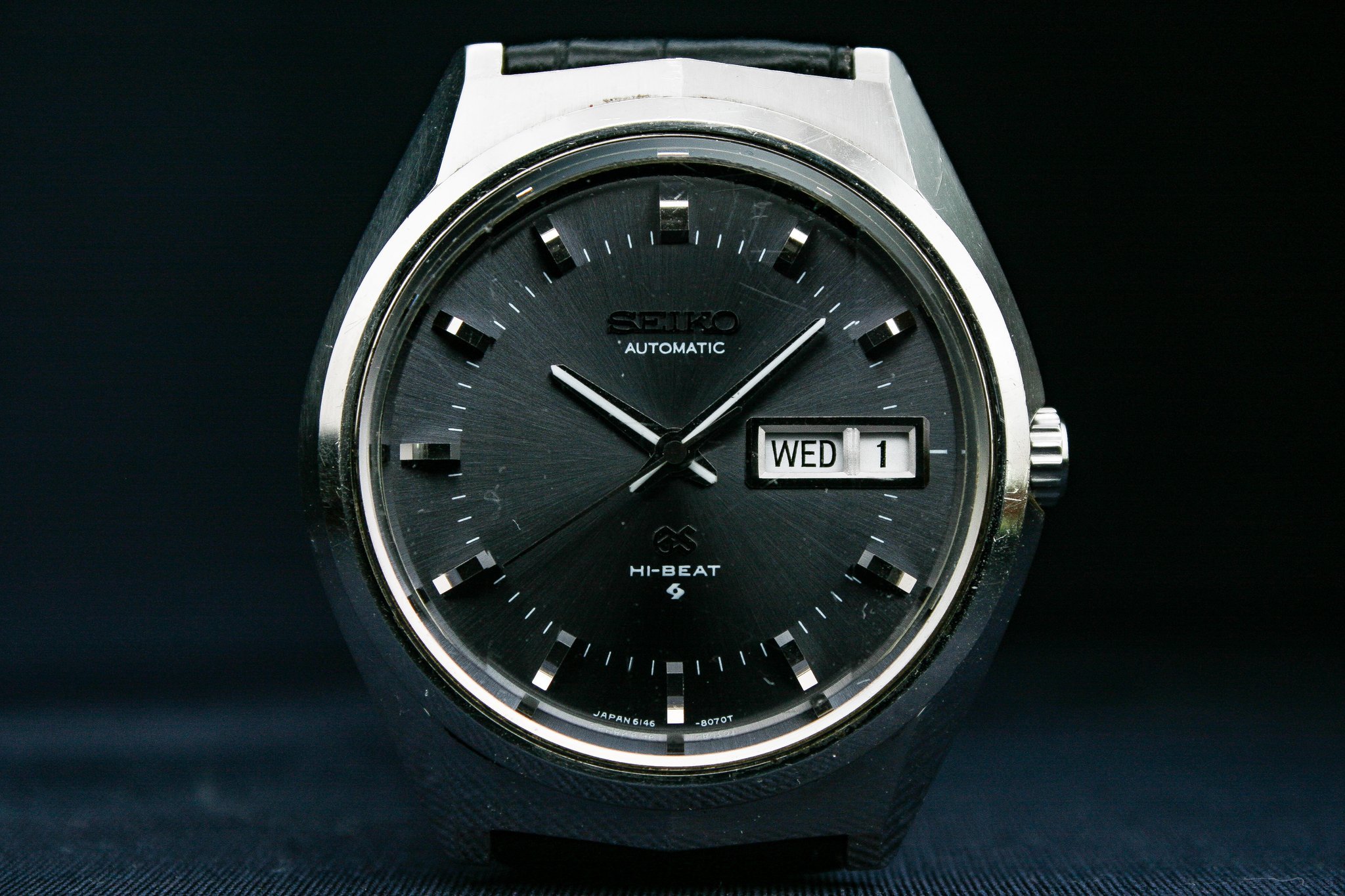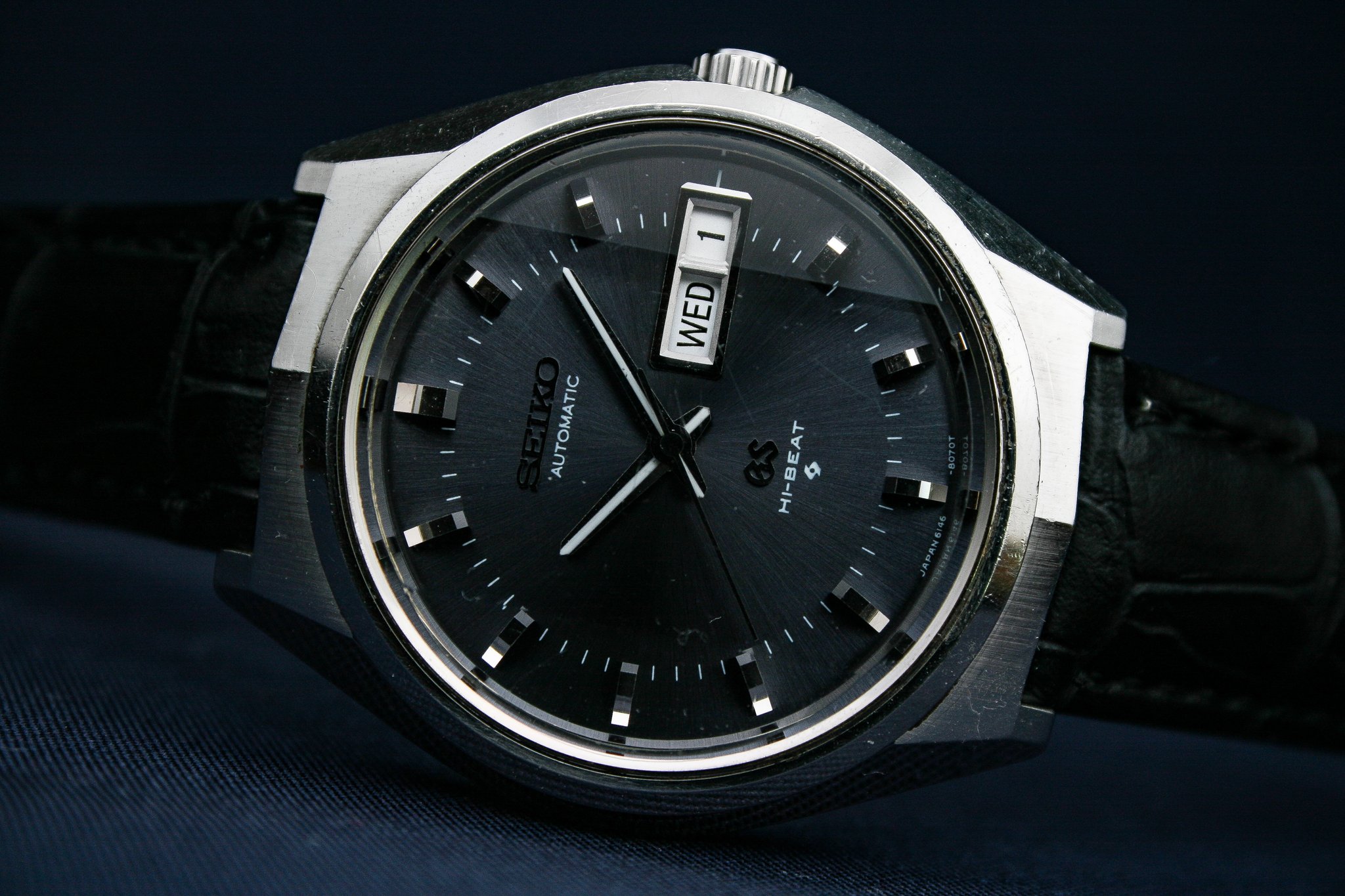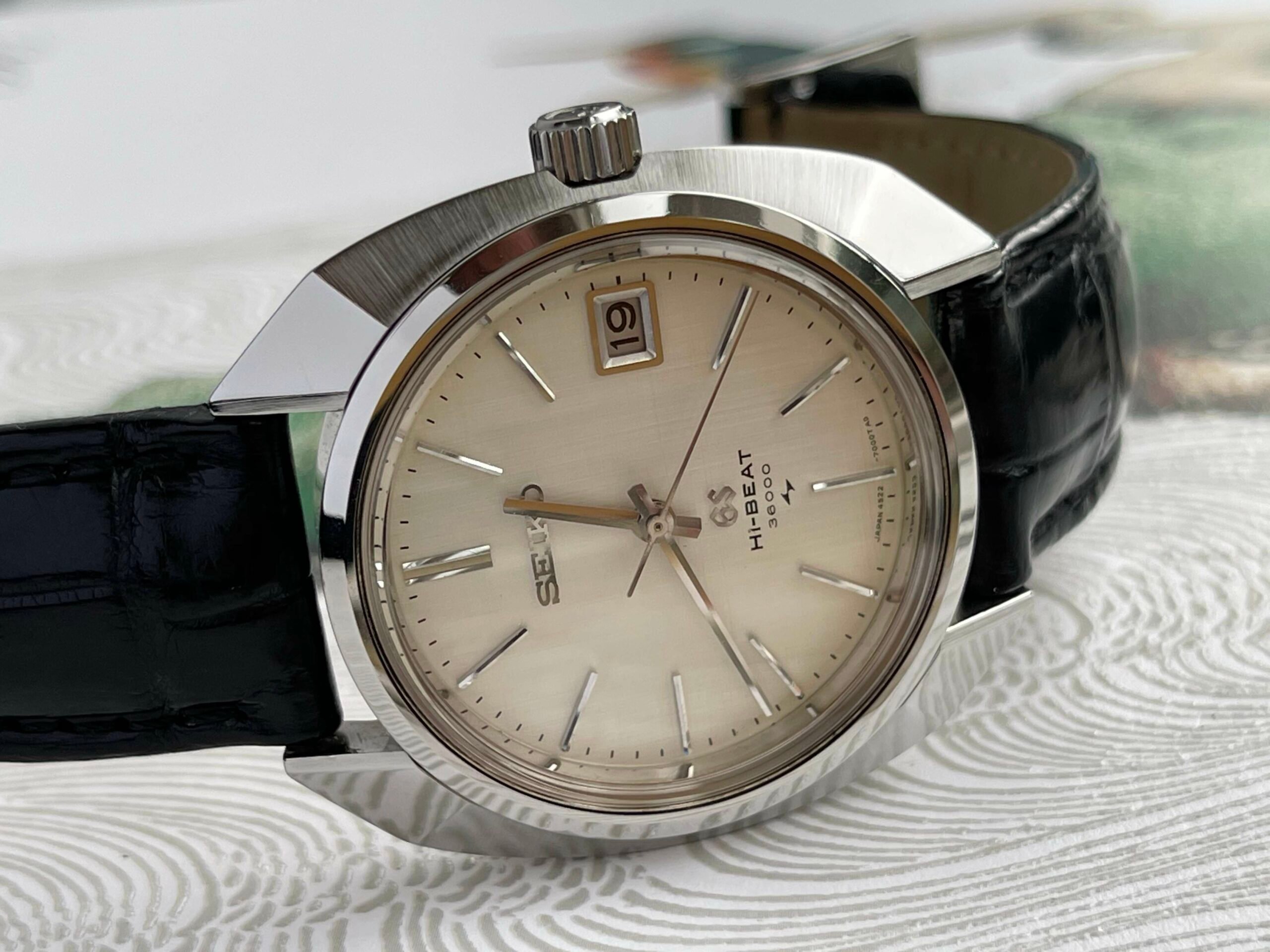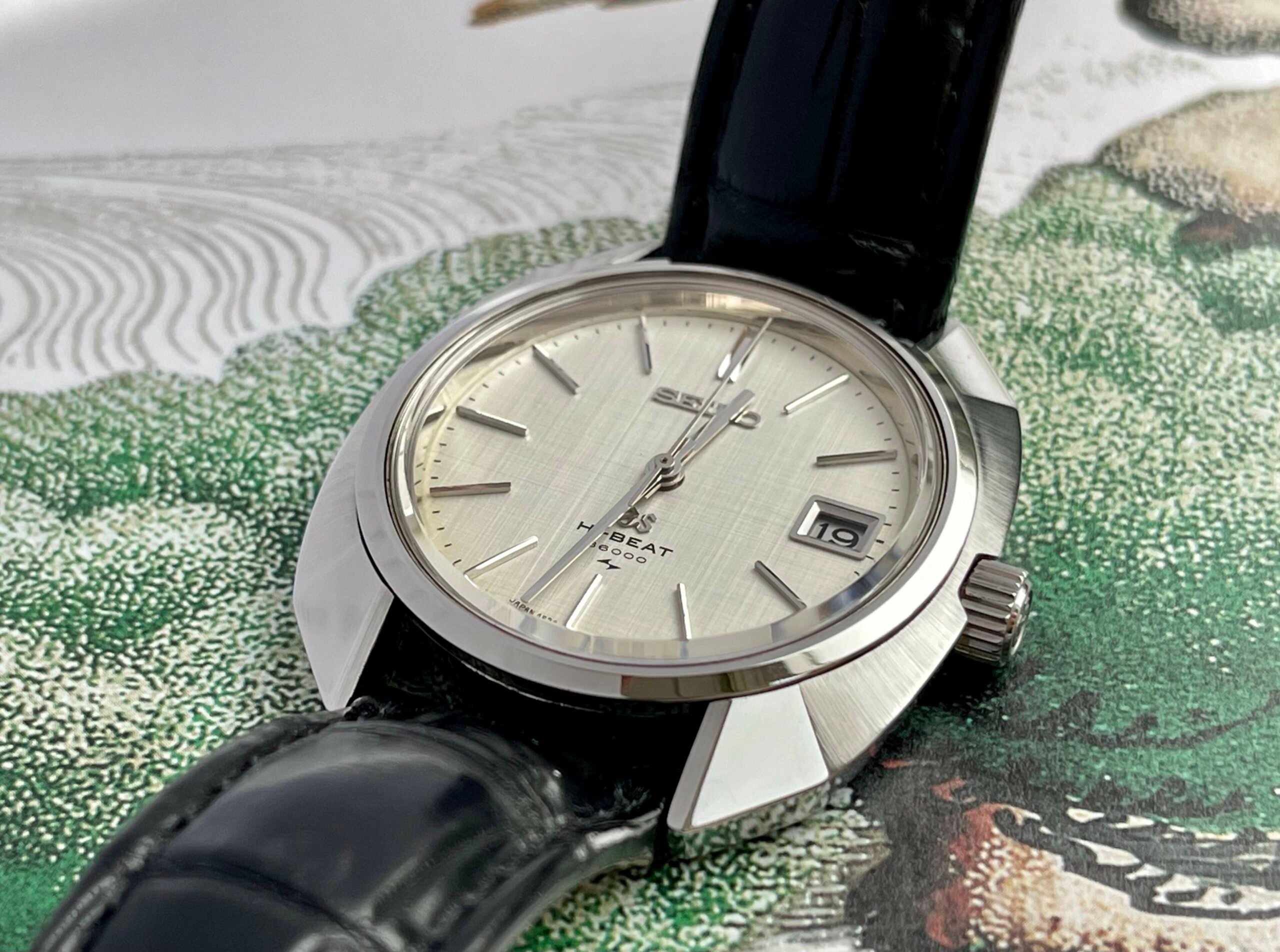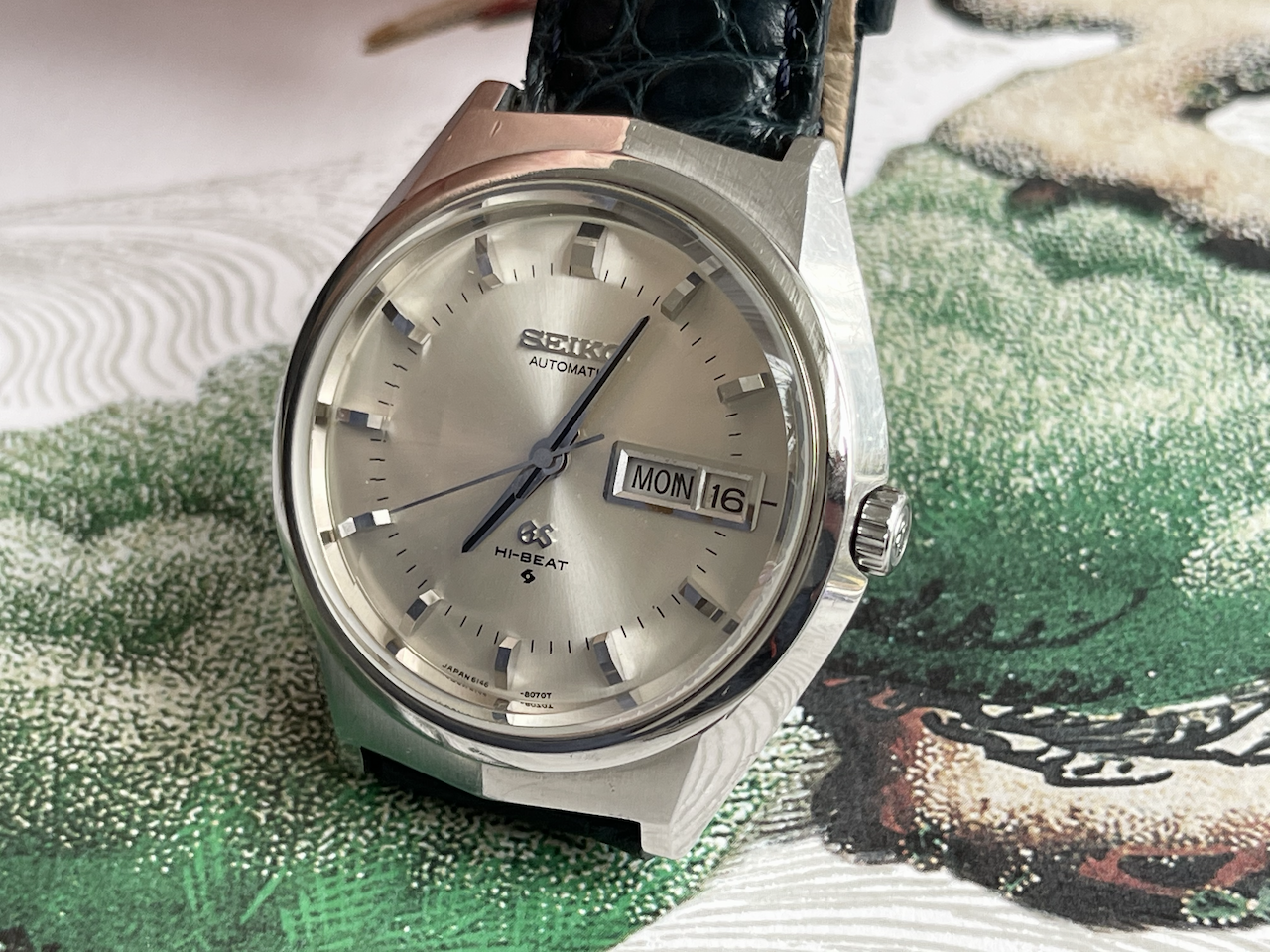Buying Guide: The Best King Seiko And Grand Seiko Watches From The 1970s
We like to talk about vintage watches a lot within the Fratello team. While the daily routine is largely focused on the most recent developments in the world of watches, the most fun for many of us lies in the world of vintage watches. It’s a world full of history, remarkable watches, incredible stories, and quirky details. It inspired us to come up with a series of articles focusing on the best watches per decade from a select group of brands. Some of them priceless, some of them still affordable. In this installment, we will take a look at the best King Seiko, and Grand Seiko watches from the 1970s.
In the 1960s, we witnessed developments that challenged the status quo of watch design forever. The sheer amount of watches that pushed the visual boundaries of what was known and accepted was enormous. On top of that, we also saw great technical developments with the race to produce the first automatic chronograph as the most significant of the decade for mechanical watches. At the same time, Seiko was the company that introduced the second milestone in the industry with the release of the first Seiko quartz watch with the Seiko Astron. This second introduction would have an enormous impact on the entire watch industry, including all the different Seiko brands around.
King Seiko and Grand Seiko in the 1970s
The story of Grand Seiko and King Seiko started in 1960 with the release of the first Grand Seiko watch. It ended fifteen years later, in 1975, as a result of the quartz revolution. With the majority of the most iconic watches being released in the second half of the 1960s, it’s definitely the decade to focus on. So the first idea was to create just the buying guide for the most remarkable watches from King Seiko and Grand Seiko from the 1960s, with many of the models also being produced in the 1970s. But in reality, that list was too short to show all the great timepieces that were released.
Additionally, the quest to produce the most accurate timepieces did not stop when Seiko stopped producing the mechanical King Seiko, and Grand Seiko watches. If you are not familiar with the story of Grand Seiko and King Seiko, please check the aforementioned article, where I explain very briefly what sparked the existence of both brands. What it boiled down to is basically producing the best watches possible. So in terms of accuracy, design, and quality so they could compete with their Swiss competitors. Additionally, it’s definitely worth reading more extensively about the competitive nature and the design that characterized the watches from both King Seiko and Grand Seiko.
Collecting vintage Seiko watches
When collecting vintage King Seiko and Grand Seiko, you will quickly find out that there is a ton of info out there. Unfortunately, finding the right info is not always easy. Sometimes there are multiple truths, and sometimes things are not as logical as they seem. On top of that, even today, new info is found about the vintage pieces. We can say that nobody has all the definitive info on all the produced pieces. But the good thing is that there is a lot of info out there. On top of that, there is a passionate community of Grand Seiko and King Seiko collectors that know a lot.
You have to keep in mind that the world was not nearly as globally focused as it is now. That is why many vintage Grand Seiko’s and King Seiko’s initially did not make it outside of Japan. Over the last roughly two decades, more and more enthusiasts have been searching for their favorite watches in Japan. It’s why we see more and more vintage pieces pop up in different parts of the world. Still, many of the iconic pieces can be difficult to find, especially in good condition. But do not let that spoil the fun of chasing after that King Seiko or Grand Seiko you really love.
The entry-point #1— King Seiko 5626-7030
Let’s start with something special. When we think of King Seiko and Grand Seiko, we mostly think of classically styled watches. In the previous article, I discussed Robert-Jan’s King Seiko 5625-7000, a time and date model with a classical style case. While case references 7000 and 7040 are the most common, King Seiko also introduced more extravagant case shapes in the late sixties and seventies. One of the best, in my opinion, is the King Seiko 5626-7030. It is also part of the King Seiko 56KS series that was in production from 1968 until Seiko ceased production of King Seiko watches altogether in 1975.
As I explained in the previous article, for the 56KS, King Seiko produced three different movements that were part of Suwa’s automatic 5600 Calibre series. The Caliber 5621A/B were time-only movements, the Caliber 5625A/B featured a date display, and the Caliber 5626A/B featured a day and a date indication. All of them are Hi-Beat calibers despite operating at 28,800vph rather than the 36,000vph we see as the operating frequency nowadays for Grand Seiko’s Hi-Beat movements. All the movements have 25 jewels and a power reserve of 47 hours. The “A” stands for unregulated and “B” for regulated grades. The movements are praised to this day for being very accurate even five decades later.
Style and accuracy
When it comes to the case design of this 5626-7030, it’s something else. The case is a large cushion-shaped design that measures a modern 38.5mm x 44 mm in size. On the original bracelet as pictured, this was and still is a spectacular timepiece. Just look at the angular shapes and the great finishing of the case. The watch comes with a silver-white dial that features the text “Superior Chronometer Officially Certified.” The gold seal on the caseback also mentions “Superior Chronometer.” Although we know they were regular but very accurate automatic movements rather than the first “Hi-beat Chronometers officially certified.”
For many Seiko collectors, the Superior Chronometer models are the ultimate King Seiko models. Despite not being as extensively regulated as their Grand Seiko counterparts, these movements are still very accurate. The 5625 movement in this watch features a day and date, automatic winding, hacking, direct center seconds. In combination with the spectacular case design, this is a great affordable King Seiko option. Finding one can be a bit of a challenge, though. There are not that many on offer. When you do find one, prices are often between 500 – 800 Euros. And that is an excellent price considering the combination of accuracy and looks.
The entry-point #2 — King Seiko Vanac 5626-7140
If you are in the market for something a bit more extravagant, consider one of the King Seiko Vanac models. King Seiko’s Vanac series is a line of watches technically based on the 56KS models but with some great 70s design twists. The Vanac line holds a select number of models that were produced between 1972 and 1974. They all feature angular cases, colorful dials, gold bezels, facetted crystals and came with very well-designed, high-quality bracelets. Both Seiko production actually delivered movement for this line. Suwa contributed with the regular King Seiko Caliber 5626 — as discussed for the first model — and Daini with the Calibers 5246 and 5256. The latter movements were also used for some regular King Seiko models, but you’ll usually find them in Vanac models.
The first thing that immediately caught my eye when I first discovered the Vanac models is the combination of the dials and the crystals. It definitely is an acquired taste, but I think it perfectly fits the time they were conceived in. As you can see in the pictures, the different facets of the crystal make it look like the dial has a pattern. The crystal has a pattern due to its facets; I love this quirky solution because it creates a unique effect. On top of that, seeing profile shots of the watch is also quite spectacular. However, it must be said that these crystals were known to scratch easily, and replacement crystals are notoriously hard to find.
Priceless ’70s styling
But there is more to the King Seiko Vanac 5626-7140 than the unique crystals and dials. The combination of the dial and crystal with the case shape and the bracelet makes for a great stylish statement. The angular case measures 38mm x42mm, so its size is still modern, even almost five decades later. The brilliantly designed bracelet looks amazing and tapers slightly towards the Vanac-branded folding clasp. Every single detail of the Vanac line is designed and executed to the highest level. Many enthusiasts claim that the level is on par with the Grand Seiko models of that time and amongst the best of the industry.
So don’t be fooled by the frivolous looks of the King Seiko Vanac 5626-7140. Or by any of the other models in the Vanac line. Some of them feature a lot more colorful dials to make them even more eye-catching. I like that this particular watch is a combination of playful elements combined with some serious style. Finding one of the King Seiko Vanac models is not that hard. Finding a 5626-7140 is also possible. But it could take some time before you find the version you love in good condition. Because as always with vintage watch, the condition is key. Especially with these special watches, that is even more important than normal due to the faceted crystal. Prices for one range from roughly 600 – 1000 Euros depending on the dial execution and the condition. But what you get in return in terms of ’70s style is priceless!
My choice — Grand Seiko 6185-8020 VFA
My pick for this list is part of the ultimate in what Grand Seiko produced in their quest for the ultimate timepiece during the 1960s and 1970s. The Grand Seiko VFA models are famous amongst Grand Seiko enthusiasts as they embody what Grand Seiko and King Seiko had set out to achieve with their inter-company rivalry. A total of 11 different Grand Seiko VFA models was introduced between 1969 and 1972. The last VFA models were visible in Seiko promo materials in 1975, the same year the Grand Seiko name ceased to exist. Now, if you want to know more about the extraordinary history of the VFA models, I suggest you read Gerald Donovan’s in-depth article on the history of VFA models on Watches by SJX. He is also the man behind The Grand Seiko Guy website, which is the most extensive online source of information on Grand Seiko.
Donovan did extensive research on the Grand Seiko VFA models. There is so much detail that goes into researching all 11 different models and recognizing different variations of each model. It’s amazing to read about it all. Picking one for this list is pretty tough as there are many great picks. The basis for the VFA line models is obviously the movements. Both the Suwa and Daini factories contributed to the VFA line with movements regulated to an incredible -2/+2 seconds per day. It explains the name VFA that stands for “Very Fine Adjusted.” The Suwa-produced 61GS models are the most interesting in terms of the combination of design and technical brilliance, I think, so that leaves two basic movements.
A difference in dial design
The Suwa factory produced the 6185x and 6186x “VFA” Hi-Beat movements that both operate at 36,000vph. The 6185 is the date-only model, and the 6186 is the day-date model. Suwa produced a 6185A version and a 6185B version. The 6185A was the first and is very rare despite being used for 5 different Grand Seiko VFA models. My favorite out of them is the 37mm 6185-8020 produced in 1970 and 1971. The watch came with the choice of two dial configurations. While the “Long Hands” version looks really nice, it’s the “Short Hands’ version with its silvered dial, shorter hands, and 3D hour markers that takes the first prize for me. The later 6185B movement was only used for the 6185-8021 produced only in 1972. Despite being in production for just one year, that model is less rare than its brother with the earlier movement.
But there is a difference. The earlier 6185-8020 does not feature “VFA” on the lower part of the dial, unlike its VFA peers. But it does have the applied Suwa logo just above the 6 o’clock marker. Its successor, the 6185-8021, has both “VFA” and the Suwa logo on the dial, but they are both printed — although there is a transitional dial with an applied Suwa logo and “VFA” printed. I like the idea of not having the VFA indication on the dial and the applied Suwa logo, as it doesn’t tell you immediately how special this watch is. Grand Seiko VFA models are rare, so finding one is hard. Prices depend heavily on the condition and availability. Expect to pay anywhere between 5K – 10K and over 10K for one in great condition. But what you get in return is simply the best there is.
Money is no object #1 — Grand Seiko 6146-8050
The next pick is also from the 61GS line, a lot more affordable but pretty much as rare as the 6185-8020 VFA I just discussed. The Grand Seiko 6146-8050 combines elements of its bigger VFA brothers in both design and movements. The story goes that this specific model was only produced for two months in 1972. All of the watches that show up for sale are dated April or May of 1972. The 6146-8050 features a 38mm angular case that can be described as typically 1970s Grand Seiko. I love those sharp angels combined with the round shapes as they make for an exciting case design. Seiko also produced the 6145-8050 as the date-only model, but my pick is the day-date 6146-8050.
Inside the case, you will find the Grand Seiko 6146 caliber. As I explained in my article about the best Grand Seiko models from the 1960s, for the 61GS movements, Grand Seiko used 4, 5, and 8 as the third digit. So the Caliber 6146 in this 6146-8050 was the least accurate at -3/+5 seconds per day. The 6155A and 6156A calibers used for “Special” Grand Seiko models were regulated to a standard of -3/+3 seconds per day. And lastly, the 6185 and 6186 “VFA” (Very Fine Adjusted) movements were regulated to an incredible -2/+2 seconds per day as you just read. So although the movement used is the least accurate out of the three, it is still impressively accurate.
More faceted crystals
When it comes to the design, the 6146-8050 is something special. The watch came with the choice of four different gradient dial colors. The ‘standard’ silvered dial and the more exotic brown, blue and green dial colors. The one pictured features the blue dial, and it looks very classy. I love that grey-blue color a lot. And as you might spot in the pictures, the watches also feature a vertically faceted crystal as we’ve seen on the King Seiko Vanac models — although a lot less extreme. The watches were delivered on stainless steel bracelets, making them look like funky sports watches. Unfortunately, not many of them are actually offered on the bracelet, as most did not survive. But the look of the watch on a leather strap is at least as cool, in my opinion.
I love that the 6146-8050 is a combination of ’70s style and Grand Seiko accuracy. While the green and brown dial variants come across as more extravagant than the silvered dial, this blue dial version is very much the most stylish. In combination with the angular case, faceted crystal, and great movement, this has to be one of the most interesting vintage Grand Seiko watches from the 1970s. As mentioned, these pieces are very rare. They do show up occasionally with vintage Grand Seiko dealers. Usually, they go for roughly 1.5K–3K depending on the condition and whether it comes on the original bracelet. With or without it, this is a great 1970s Grand Seiko.
Money is no object #2 — Grand Seiko 4522A-7000
The last watch on this list is the Grand Seiko 4522A-7000. Why did I pick it? For multiple reasons. First off, the 45GS series is the final series produced by Daini Seikosha. Secondly, I love the case design nicknamed “Turtle Shell’ by Japanese Grand Seiko collectors. It’s the stand-out case design out of the four that were produced for the 45GS series. Additionally, the stainless steel version came with a very nice matte blue dial and a very classy textured white linen dial. This linen dial works very nicely with the standout case shape of the watch, and it’s why it’s my pick. Additionally, Seiko also introduced a gold-capped version with a white dial.
Inside the 37mm x 41mm case, you will find the manual winding Hi-Beat Grand Seiko caliber 4522A that operates at 36,000vph and has a date complication. It’s one of only three calibers that were produced for the 45GS line. The same watch was also available as the 4520-7000 with the 4520A caliber without a date. The third caliber is the legendary 4580 VFA caliber that was one of the two “Very Fine Adjusted” movements Daini made. That caliber was used for the two 4580 VFA models that they made.
The case is the eye-catcher
The 4522-7000 was actually introduced in 1969. So with your permission, I cheated a bit by adding it to the list. The watch was part of the Seiko collection until 1971, so it fits this list perfectly, I would say. The best thing for me about the watch is its remarkable case. The combination of the shape, the slim profile, and the finishing is simply amazing. They give the watch its character and create an immediate impact upon seeing it. While it’s definitely a shape defined by the era it was conceived in, it’s a thing of beauty you could easily wear today.
Combined with the beautiful manual winding movement and that textured linen dial, it makes for a brilliant piece with its applied markers and classy date window. The 4522-7000 is a beautiful example of everything that makes Grand Seiko watches from the 1960s and 1970s brilliant. Finding one is definitely possible. They are offered by recognized vintage Grand Seiko sellers as well as the usual platforms. Prices for one go from roughly 1k to 2.5K depending on the condition. What you get for that money is a piece that is the perfect manifestation of Grand Seiko’s technical brilliance combined with amazing design and immaculate finishing.
Final Thoughts
In this series of articles, I cannot stress enough to do your research. On top of being crucial in not becoming disappointed with your purchase, it is also a lot of fun. Doing research and finding out about the watches you love is often the first connection you will make to a specific watch. One thing to keep in mind when it comes to vintage King Seiko and Grand Seiko watches is that there are many fakes and Franken pieces out there.
On top of that, many parts have been replaced over time, and cases have been polished. So you really have to dive in deep to be able to judge the watches on offer. As explained, finding the right info can be tough as no resource has all the definitive info. That doesn’t mean there aren’t great online sources of info. A great website for info on Grand Seiko is The Grand Seiko Guy. A great overview of King Seiko references can be found on the Watchuseek Seiko Forum.
For this article, I picked five relevant pieces from both brands. It certainly does not mean there aren’t more that could have been on this list. In the end, it’s all about making choices when it comes to this series of articles. But do let us know what your favorite vintage releases from King Seiko and Grand Seiko are.
Next week, we will take a look at some of the best Heuer watches from the 1970s. In the meantime, let us know in the comment section what your favorite Grand Seiko or King Seiko from the 1970s is.

